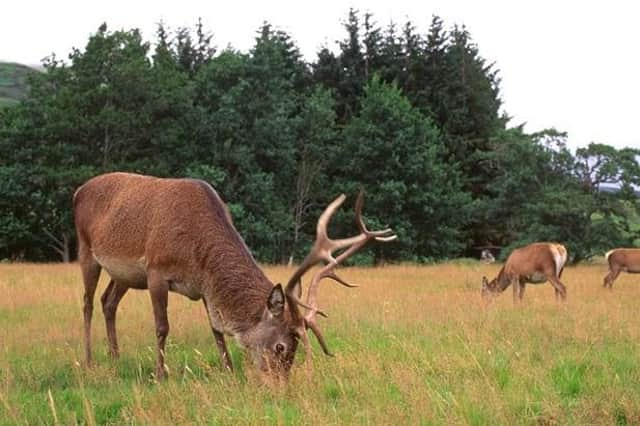Motorists warned of increased risk of deer on roads


Collisions usually increase in late May and June, as young deer disperse to look for their own territories.
In response to the potential risk, NatureScot is working with Transport Scotland and Traffic Scotland to put warning messages on electronic variable messaging signs (VMS) as well as issuing general advice to drivers.
Advertisement
Hide AdAdvertisement
Hide AdUp to Monday June 13, the signs will display warning at key locations on the main trunk roads.
Collisions between deer and vehicles are estimated to be as high as 9000 per year in Scotland, resulting in 50 to 100 human injuries. The majority of collisions take place in early evening through to midnight, with another peak occurring from 6am to 9am.
Over the past 50 years, the number of wild deer in Scotland has increased, as has their range. In the same period, the volume of road traffic has almost doubled.
Jamie Hammond, NatureScot wildlife management officer, said: "Particularly in peak times, we advise motorists to slow down and watch for deer crossing roads. Be aware that if you're driving near woods, deer can suddenly appear before you have time to brake.
Advertisement
Hide AdAdvertisement
Hide Ad"If you do hit a deer, report it to the police even if you’re uninjured and your car isn’t damaged, as the deer may be fatally injured and suffering."
Angus Corby, Transport Scotland landscape and biodiversity adviser, added: “As the government agency responsible for the trunk road network, Transport Scotland requires our operating companies to prepare annual Deer Management Plans to take account of the likely impact of deer on the network and to develop possible mitigation strategies in association with adjacent local landowners.
"The agency works closely with colleagues in NatureScot and other relevant organisations with the aim of reducing instances of deer-vehicle collisions occurring across the trunk road network, helping to maintain road safety and supporting the welfare of the animals concerned.”
Driving tips on avoiding deer can be found on the NatureScot website.